A reliable and functional toilet is essential to any household or commercial space. However, its proper functioning depends on various components, including the water supply line.
This often-overlooked component plays a crucial role in providing a steady water flow to the toilet tank, ensuring optimal flushing and drainage. While most toilets have their water supply line running through the wall. Some older or custom-built homes may have them running through the floor.
This unique setup can present some challenges for homeowners and plumbers alike, making it important to thoroughly understand the toilet water supply line through the floor. Here we will delve into the various aspects of this setup on the toilet water supply line through floor. So, let’s dive in and explore this aspect of bathroom plumbing in more detail.
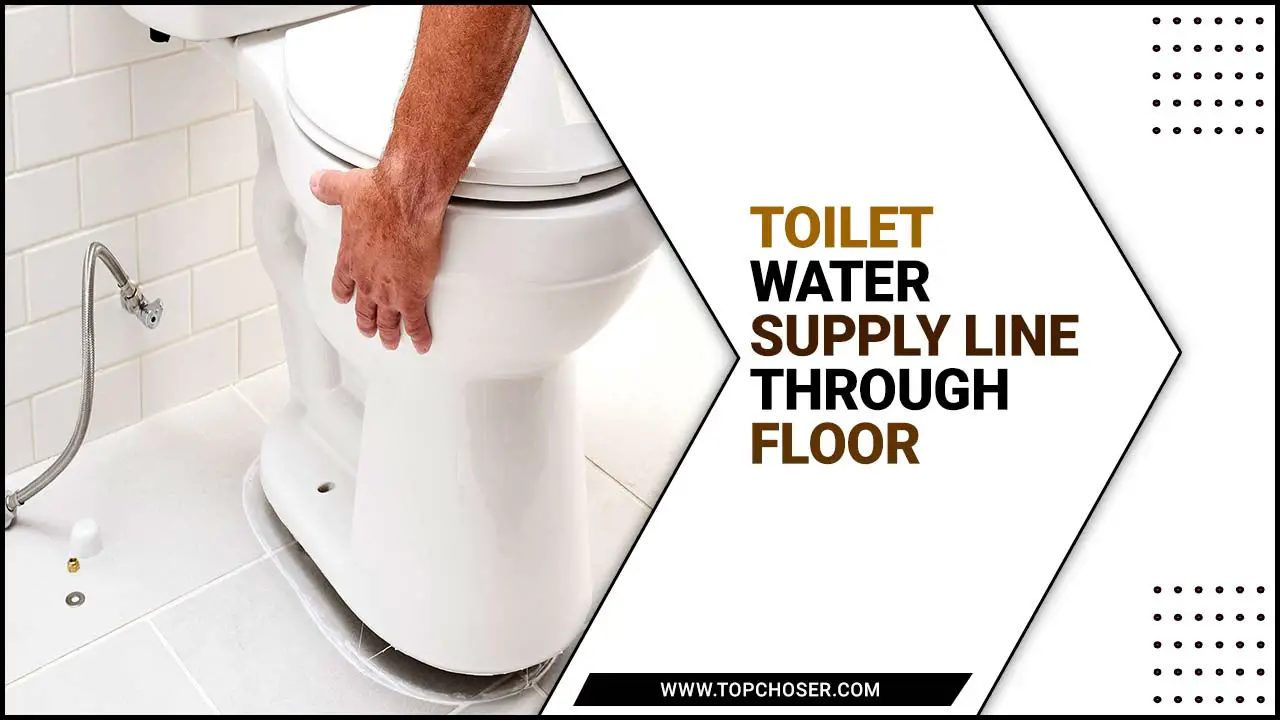
Tools Required For Replacing The Toilet Water Supply Line
You will need key special tools to replace the toilet water supply line through the floor. An adjustable wrench is essential for loosening and tightening fittings. You’ll also need a replacement water supply line to connect the toilet to the water source.
- Adjustable wrench or pliers
- Pipe wrench
- Teflon tape
- Bucket or towel
- Pipe cutter or hacksaw
- Pipe reamer or file
- Slip joint pliers
- Screwdriver
- Silicone sealant
- Replacement toilet water supply line
Steps To Replace Toilet Water Supply Line Through Floor
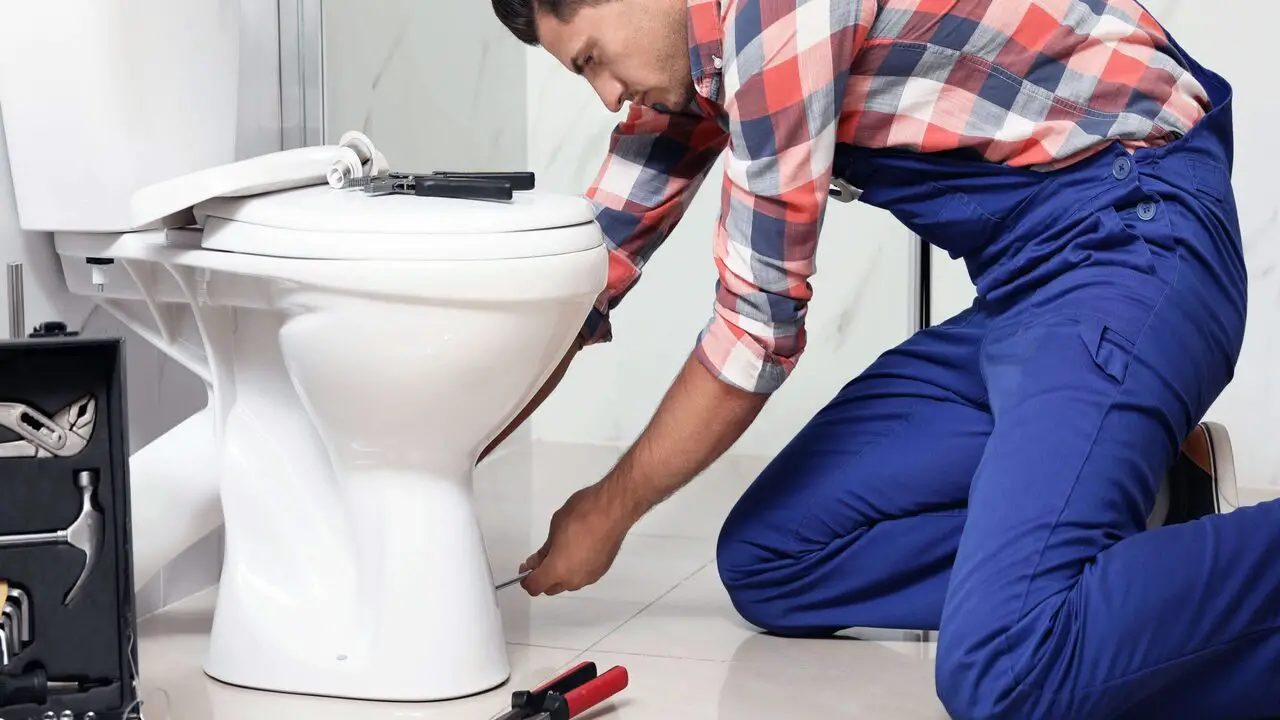
For several reasons, understanding the toilet cold water supply line through the floor is paramount. Firstly, having knowledge about the water supply line helps maintain and troubleshoot any potential issues.
By knowing the location and path of the supply line, professionals can quickly identify and rectify any leaks or blockages, preventing further damage to the plumbing system. Secondly, knowing the toilet water supply line through the floor is crucial for efficiently installing and replacing toilets.
Plumbers and contractors must be well-informed about the supply line location to ensure proper alignment and connection of the toilet fixture. This knowledge also aids in selecting the right toilet model based on the existing plumbing setup, preventing compatibility issues. Here, we will give you five steps on toilet water supply line through floor.
Turn Off The Water Supply
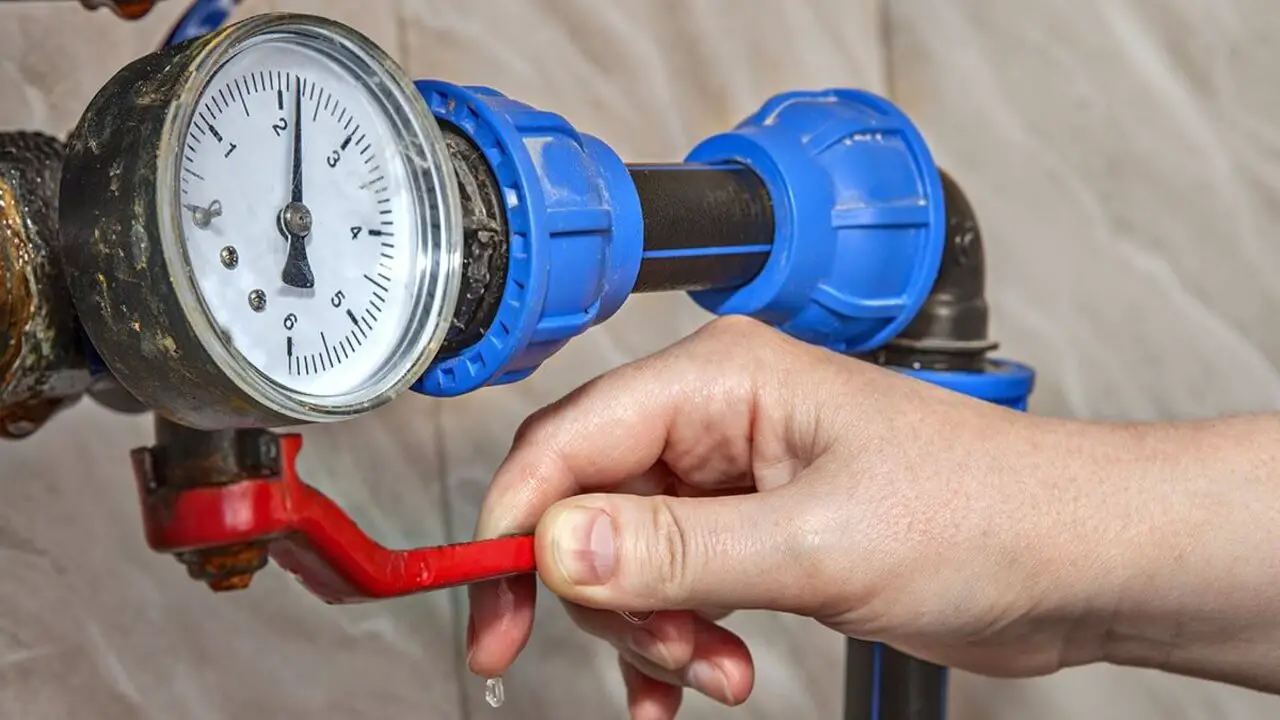
The supply water pipeline is commonly found running through the floor and connecting to the bottom of the toilet tank. This design ensures a neat and streamlined installation and allows for easy access when needed. To begin turning off the water supply to the toilet, locate the shut-off valve and water supply valve.
This valve is typically located on the wall or floor near the toilet’s base, close to the water supply line in the bathroom. It is crucial to familiarize yourself with the valve’s appearance beforehand, as it may vary depending on your home’s plumbing system.
Remove The Old Supply Line
Locate the shut-off valve to begin turning off the water supply to the toilet. This valve is typically located on the wall or floor near the toilet’s base, close to the water supply line in the bathroom. It is crucial to familiarize yourself with the valve’s appearance beforehand, as it may vary depending on your home’s plumbing system.
Once you have located the shut-off valve, turn it clockwise or to the right until it is fully closed. This action effectively stops water flow through the supply line and into the toilet tank. It is important to ensure a complete closure to prevent any residual water from leaking or causing damage.
Prepare The New Supply Line
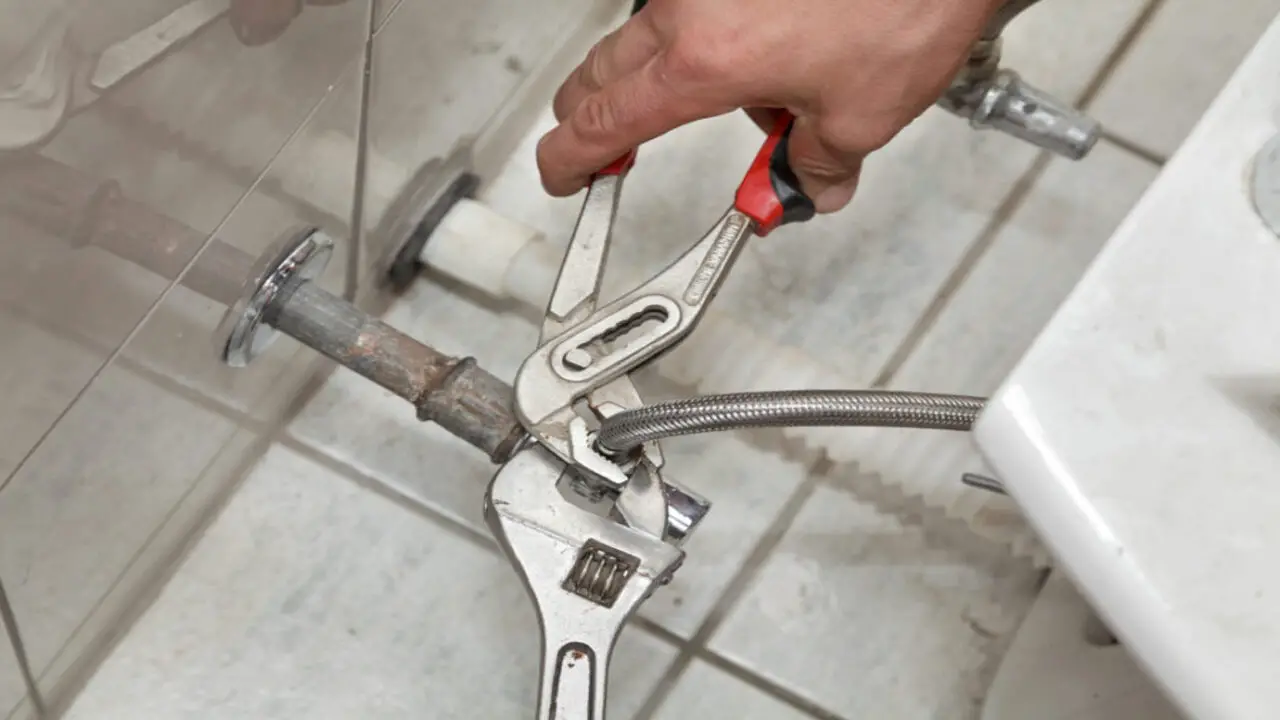
Careful measurements must then be taken to ensure accurate placement and alignment of the new supply line. This will require precise cutting and fitting of the pipes, followed by securely soldering the joints to create a watertight connection. Once the new supply line has been successfully installed, thoroughly testing the system for any potential leaks or issues is imperative.
This can be done by gradually turning on the water supply and carefully inspecting the connections for any signs of leakage. Any necessary adjustments or repairs should be made promptly to ensure the proper functioning and longevity of the newly installed toilet water supply line.
Attach One End Of The New Supply Line
To properly connect a new supply line to a toilet, it is important to follow the correct procedure. Ensure that you turn off the water supply to the toilet. Once this is done, attach one end of the new supply line to the water shut-off valve, ensuring a secure connection. It is crucial to use the appropriate fittings and tighten them properly to avoid leaks.
Next, carefully navigate the supply line through the bathroom floor, taking into account any obstructions or obstacles that may be present. This step requires attention to detail and precision to avoid damaging the line or causing unnecessary complications. Proper tools such as pipe cutters or wrenches may be handy to facilitate the process.
Thread The Other End Through The Floor
To begin, locating the appropriate area on the floor where you will thread the water supply line is essential. This spot should be near the toilet’s base and align with the water source. Once identified, it is crucial to measure the distance accurately to ensure a secure fit.
Next, drill a hole through the floor at the designated location. This hole should be slightly larger than the diameter of the supply line to allow for easy threading. It would be best to take special care to avoid damaging any underlying pipes or electrical wiring during this process.
Connect To The Toilet Tank
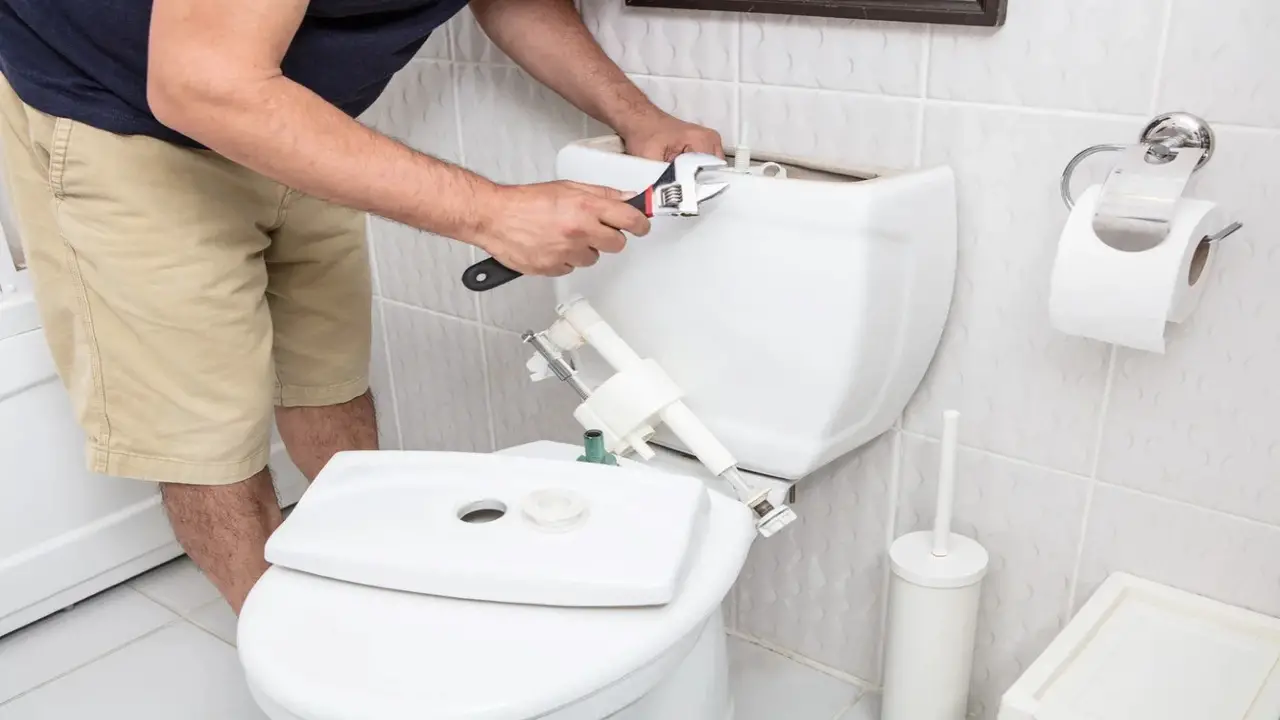
Typically, the toilet water supply line is concealed within the walls or runs through the floor, depending on the plumbing layout of the building. In most cases, the toilet supply lines are connected to the main water line running through the walls or floors. This connection uses various fittings, such as valves and connectors, to ensure a secure and leak-free joint.
A flexible hose or a rigid pipe connects the toilet tank to the water supply line. This PVC hose or pipe extends from the water supply valve near the floor or wall to the bottom of the toilet tank. It is important to ensure the connection is tight and properly sealed to prevent water leakage.
Turn On The Water Supply
Once the preparations are complete, it is time to turn on the water supply. Slowly turn the shut-off valve counterclockwise to open it gradually. This will allow a controlled water flow into the toilet tank, preventing any sudden surges or potential damage.
Finally, observe the water flow and check for leaks around the toilet base or the water supply line. If you detect any leaks, immediately turn off the water supply and address the issue before proceeding.
Is It Necessary To Hire A Professional Plumber?
When installing a toilet water supply line through the floor, many people wonder if it is necessary to hire a professional plumber. At the same time, some individuals may feel confident in tackling this task on their own. Generally, experts recommend that you seek the assistance of a professional.
Installing a toilet water supply line involves working with plumbing connections and ensuring proper alignment and sealing. A professional plumber will have the expertise and specialized tools to complete the installation correctly, minimizing the risk of leaks or other plumbing issues down the line. Hiring a professional can save you time and effort. They are giving you peace of mind, knowing the job was done correctly.
Importance Of A Properly Functioning Water Supply Line
A properly functioning water supply line is essential for consistent water flow and preventing leaks. It delivers water to the toilet tank, enabling proper flushing. Over time, the line may become damaged or clogged, leading to issues like low water pressure or leaks.
To replace the supply line, shut off the water supply, remove the old line, and install a new one. Using a flexible braided stainless steel supply line ensures durability and easy installation. A well-functioning water supply line is crucial for maintaining the efficiency and longevity of your toilet’s operation.
How To Identify A Faulty Toilet Water Supply Line?
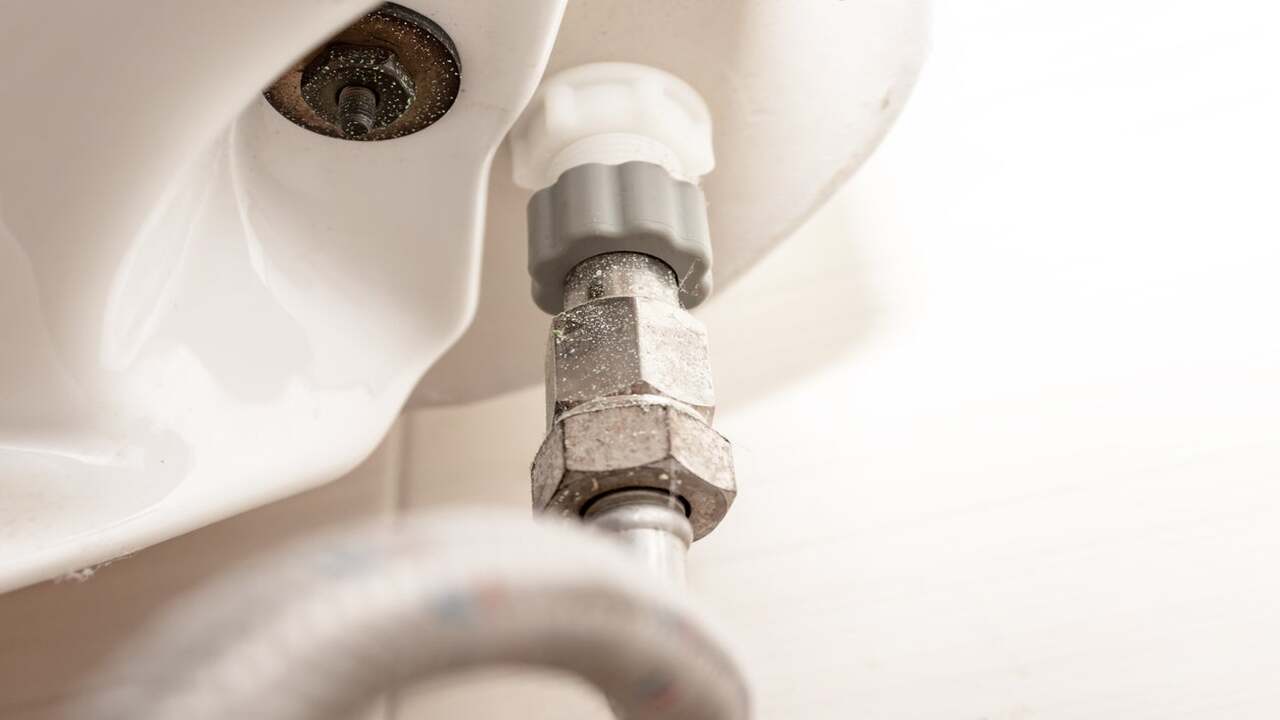
Identifying a faulty toilet water supply line is important for maintaining the functionality of your bathroom. Several signs may indicate a problem with your supply line. Firstly, if you notice any leaks or dripping around the connection points, it could indicate that the line is damaged or loose.
Additionally, if you experience low water pressure when flushing the toilet or filling up the tank, it could be due to a blockage or kink in the supply line. Finally, if you hear hissing sounds from the toilet after flushing, it may indicate a problem with the water supply line. If you notice any of these signs, it is best to address the issue promptly to prevent further damage and ensure proper toilet functioning.
Signs Of A Leaking Or Damaged Water Supply Line
The signs of a leaking or damaged water supply line can be subtle, but it is crucial to identify them early to prevent further damage and costly repairs. One of the most noticeable indicators is a sudden increase in your water bill without any apparent explanation.
If you notice a significant spike in your monthly water expenses, it could indicate a leak in your water supply line. Another telltale sign is a decrease in water pressure throughout your home. If you have noticed a gradual decrease in the strength of your shower supply or faucets, it could indicate a damaged water supply line.
Safety Measures While Handling Plumbing Tools
Knowledge and adherence to safety measures while handling tools are of utmost importance in the plumbing field. Plumbing tools require a certain level of skill and caution to prevent accidents and ensure the overall well-being of the plumber and the clients they serve. Understanding the significance of safety measures is essential to maintaining a professional and responsible approach to plumbing work.
- Always wear appropriate safety gear, such as gloves, goggles, and a mask, to protect yourself from potential hazards.
- Please familiarize yourself with using and handling each plumbing tool before using it.
- Ensure that all tools are in good condition, with no signs of damage or wear that could compromise their safety or effectiveness.
- Use tools specifically designed for plumbing tasks and avoid using makeshift or inappropriate tools that could lead to accidents.
- Keep your work area clean and well organised to minimize the risk of tripping or falling while handling tools.
- Use caution when working with sharp or cutting tools, and position your hands away from the cutting edges.
- Avoid excessive force or overexertion when using plumbing tools, as this can lead to muscle strain or other injuries.
- Be mindful of your surroundings and avoid distractions while handling tools, as this can increase the risk of accidents.
- When working on plumbing systems involving electricity, turn off the power supply to prevent electric shocks.
- If you are unsure how to safely handle a specific plumbing tool or task, seek guidance from a professional or experienced plumber.
Tips For Maintaining Your Toilet Water Supply Pipe

Maintaining your toilet water supply line is essential for your entire plumbing system’s overall functionality and longevity. A well-maintained water supply line ensures a steady and reliable water flow to your toilet, preventing disruptions or inconveniences. You can avoid potential problems and costly repairs by following some simple tips.
- Regularly inspect the water supply line for any signs of leaks or damage.
- Replace the water supply line if it shows signs of wear or corrosion.
- Avoid using harsh chemicals or cleaners that could damage the supply line.
- Keep the area around the supply line clean, tightest spaces and free from debris or obstructions.
- Periodically check the water pressure to ensure it is appropriate for the supply line.
- If you experience any issues with the water supply line, such as reduced water flow or leaking, address them promptly to prevent further damage.
- Consider installing a water pressure regulator to protect the supply line from excessive pressure.
- If you live in an area with hard water, consider using a water softener to prevent mineral buildup in the supply line.
- Regularly flush the toilet to prevent blockages or buildup in the supply line.
How Often Should You Check Your Toilet’s Water Supply Line?
Regularly checking your toilet’s water supply line is an important maintenance task that can help prevent potential issues and water damage. You should check the water supply line at least once a year or whenever you notice any signs of leakage or wear. This can include checking for any cracks, kinks, or deterioration in the line.
Additionally, if you live in an area with hard water, checking and cleaning the supply line more frequently may be necessary to prevent mineral buildup. Regularly inspecting and maintaining your toilet’s water supply line ensures. It remains in good condition and avoids any unexpected plumbing emergencies.
Conclusion
It is very important to know the toilet water supply line through floor. Understanding the proper placement and installation of a toilet water supply line through the floor is crucial for maintaining a functional and efficient bathroom. Whether you are a homeowner or a professional plumber, it is important to carefully follow building codes and best practices to ensure a safe and leak-free installation.
By learning and properly executing this process, you can avoid potential plumbing issues and ensure the longevity of your toilet’s water supply. Remember, attention to detail and precision are key when it comes to plumbing.
Frequently Asked Questions
[rank_math_rich_snippet id=”s-ca66d91a-9fc1-41e9-aa17-02583dd3f924″]

I am passionate about home engineering. I specialize in designing, installing, and maintaining heating, ventilation, and air conditioning systems. My goal is to help people stay comfortable in their homes all year long.
